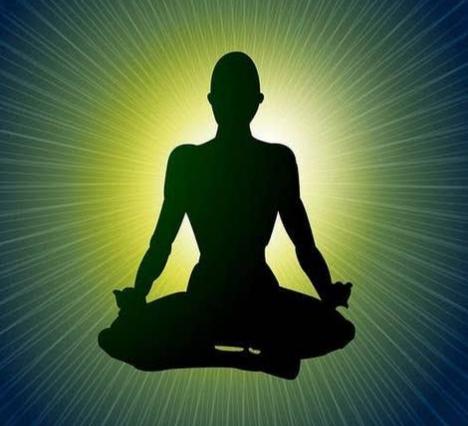Tagged: Hinduism, Mediation, philosophy, Raja Yoga, Santana Dharma, Spirituality
- This topic has 0 replies, 1 voice, and was last updated by .
-
AuthorPosts
-
June 22, 2024 at 12:15 am #2092Up::0
As an Indian, yoga is a primary way to explore the self and to meditate, get control over our minds. Yoga is a holistic discipline that originated in ancient India and encompasses various physical, mental, and spiritual practices. It includes asanas, pranayama, meditation, and ethical guidelines for living . The aim of yoga is to achieve a state of harmony between mind, body, and spirit. It is practiced for health and relaxation, as well as for spiritual growth and self-awareness. Philosophy is seeking to understand and explore the nature of reality, human existence, morality, logic, and the purpose of life. The Yoga philosophy speaks about the theory and practice for the realization of the ultimate truth concerning human being and the world. In Vedanta, yoga is understood as ‘union’, i.e. spiritual union of the individual soul with the supreme soul.
Principles of Yoga:
- Karma Yoga — the yoga of action
- Bhakti Yoga — the yoga of devotion
- Jnana Yoga — the yoga of knowledge or discrimination
- Raja Yoga — the Royal Path
These principles are four different paths that helps us to manifest universal surrounding to achieve the true wisdom through mediation. In that Raja Yoga is a study of the human mind, becoming aware of its habitual tendencies, and ultimately transcending identification with the body-mind-intellect complex through meditation to rest in the vast ocean of consciousness, which comprises it all.

What is raja yoga?
Raja Yoga, often referred to as the “royal path” of yoga, is one of the main paths of yoga that focuses on meditation and mental control as a means to achieve spiritual enlightenment. The term “Raja” means “king” or “royal,” signifying that it is a path of self-mastery and control over the mind and body.
The Eight Limbs of Raja Yoga :
Also known as steps to achieve raja yoga. At the heart of Raja Yoga’s philosophy is the Ashtanga Yoga, or the “Eight Limbs of Yoga,” which provides a step-by-step guide to personal and spiritual development.
1.Yama (Ethical Restraints)
These are moral imperatives that guide one’s behavior towards others. They include:
- Ahimsa(Non-violence)
- Satya( Truthfulness)
- Asteya(Non-stealing)
- Brahmacharya(Celibacy or moderation)
- Aparigraha(Non-possessiveness
2.Niyama (Personal Observances)
These are practices that foster self-discipline and inner purity. They include:
- Saucha(Cleanliness)
- Santosha(Contentment)
- Tapas(Self-discipline)
- Svadhyaya(Self-study)
- Ishvara Pranidhana(Surrender to a higher power)
3.Asana (Physical Postures)
The practice of physical postures to prepare the body for meditation.
4.Pranayama (Breath Control)
Techniques to control the breath, which is believed to control the life force energy (prana) in the body and claiming the body.

5.Pratyahara (Withdrawal of the Senses)
The practice of withdrawing the senses from external objects, turning inward to focus on the self.
6.Dharana (Concentration)
Focused concentration on a single point or object, training the mind to maintain steady attention.
7.Dhyana (Meditation)
Sustained and uninterrupted meditation, where the mind is fully absorbed in the object of focus.
8.Samadhi (Enlightenment or Absorption)
The final stage, where the practitioner merges with the object of meditation and achieves a state of oneness or self-realization. The culmination of the practice, where the individual self merges with universal consciousness, experiencing profound unity and enlightenment.
Objectives of raja yoga:
Self-Realisation: Achieving a profound understanding of oneself and one’s connection to the universe.
Mind Control: Developing mastery over the mind to achieve mental peace and clarity.
Spiritual Growth: Progressing on the spiritual path towards enlightenment.
Practices Involved
Meditation: Regular meditation practices to calm the mind and achieve deeper states of awareness.
Mindfulness: Being fully present in each moment to enhance mental clarity and focus.
Breathing Exercises: Various pranayama techniques to regulate the breath and life force energy.
Physical Postures: Practicing asanas to maintain physical health and prepare the body for long periods of meditation.
Benefits of Raja Yoga:
- Improved mental focus and concentration
- Enhanced emotional stability and calmness
- Greater self-awareness and understanding
- Spiritual growth and a sense of inner peace
Conclusion:
Yoga deals with the practical steps of achieving liberation from all human imperfections and suffering to know the mankind true nature. The philosophy of Raja Yoga presents a timeless and holistic path to self-mastery and spiritual awakening. Through its structured practices and ethical guidelines, Raja Yoga offers a practical framework for transforming the mind, body, and spirit. By transcending the limitations of the ego and realizing one’s true nature as pure consciousness, practitioners of Raja Yoga can attain profound inner peace and ultimate liberation, contributing to their personal well-being and the collective harmony of society.
- This topic was modified 1 year ago by .
-
AuthorPosts
- You must be logged in to reply to this topic.